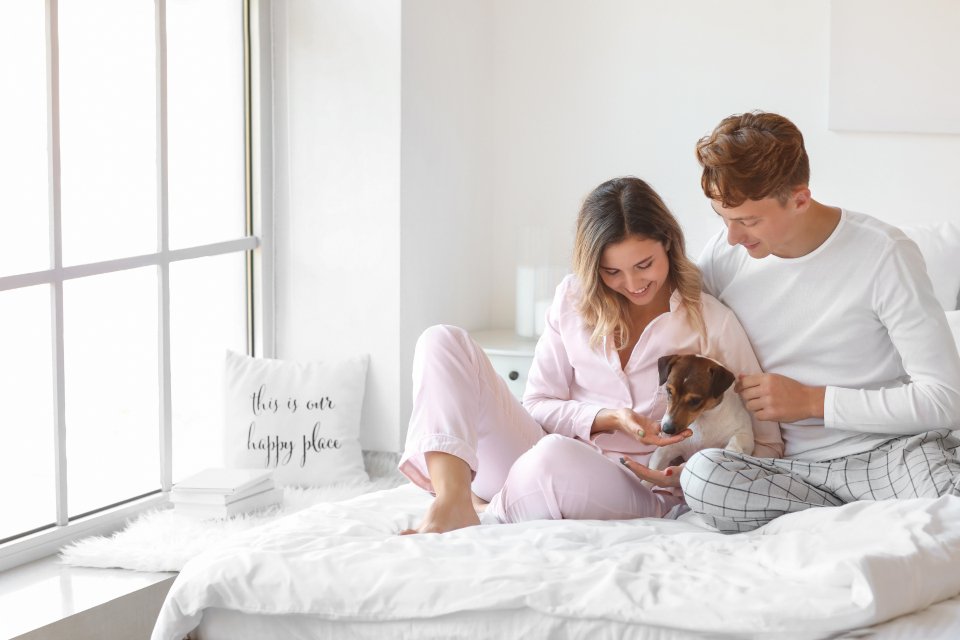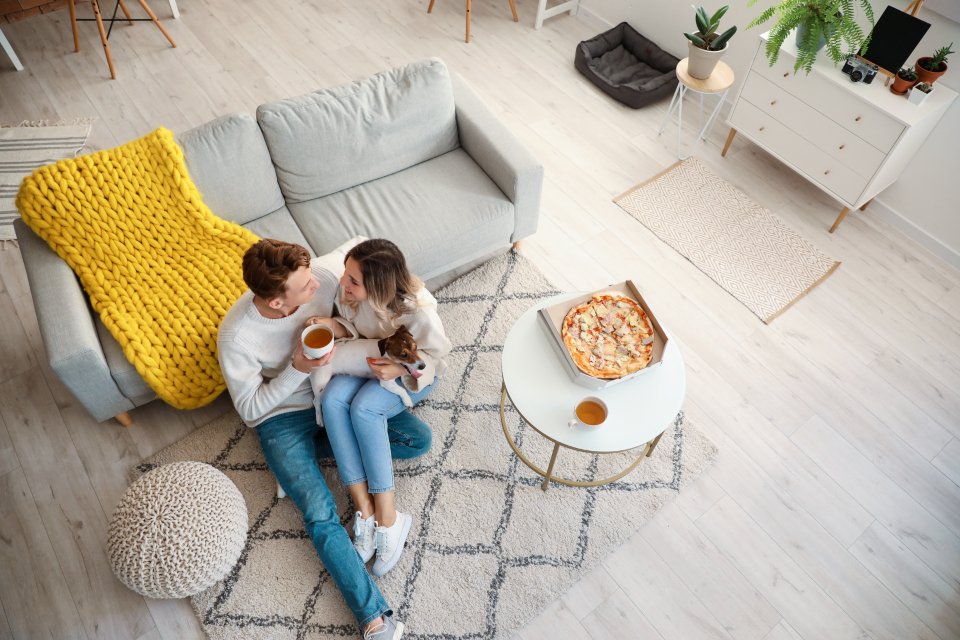Have you ever felt torn between your beloved dog and your significant other? It’s a surprisingly common struggle, and it can be downright heartbreaking. The wag of a tail or a loving glance from your furry friend can clash hard with sighs, frowns, or even arguments at home. Love shouldn’t come with ultimatums, but when your partner and your dog just can’t seem to see eye to eye, the tension can shake the very foundation of your relationship. But don’t lose hope—there are ways to bridge the gap and restore harmony in your home.
Understanding the Root Cause of the Tension
Before jumping into solutions, it’s important to figure out why your dog and partner aren’t getting along. Sometimes, it’s a personality clash—maybe your dog is energetic and your partner prefers quiet. Or perhaps your partner never grew up with pets and feels overwhelmed. Dogs pick up on emotions too, so if your partner feels anxious, your dog might react with barking or avoidance. It’s also possible your dog had a negative experience before and is wary of strangers, even if that “stranger” is your loved one. By observing both your partner and your dog carefully, you can start to spot patterns in their behavior. Talk openly with your partner about their feelings, and consider how your dog’s past or temperament might play a role. Pinpointing the root cause gives you a solid starting point for finding peace.
Communicating Openly with Your Partner

Honest, gentle communication with your partner is key. Avoid blaming language—don’t say, “You never even try with the dog!” Instead, try something like, “I notice things get tense when the dog jumps up. How does that make you feel?” Invite your partner to express their thoughts and listen without judgment. Sometimes, resentment builds simply because someone feels unheard or unappreciated. Share why your dog means so much to you, and ask your partner to share their perspective too. By approaching the conversation with empathy and patience, you lay the groundwork for teamwork instead of conflict. Remember, you’re both on the same side, even if it doesn’t feel like it at first.
Helping Your Partner Build a Relationship with Your Dog

Relationships take time, and that includes the one between your partner and your dog. Encourage small, positive interactions—maybe your partner can offer treats, join you on a walk, or simply sit nearby while you play with your dog. Start slow and let both adjust at their own pace. If your dog is nervous, make sure your partner uses calm, gentle movements and a soft voice. If your partner feels unsure, show them how to read your dog’s signals: a wagging tail, relaxed body, or soft eyes mean your dog is comfortable. Celebrate every small success, even if it’s just a quick sniff or a tail wag. Over time, these positive moments can build trust and affection.
Setting Boundaries and Creating Safe Spaces

It’s vital to create spaces where both your partner and your dog feel secure. Maybe your dog needs a cozy bed in a quiet corner, away from busy areas. At the same time, your partner should have dog-free zones—like a favorite chair or room—especially if they need downtime. Setting boundaries isn’t about punishment; it’s about respect. Use baby gates or closed doors to help everyone adjust. Let your partner know it’s okay to say no to certain dog behaviors, like jumping or licking, as long as it’s done kindly. By establishing clear boundaries, you show both your dog and your partner that their comfort matters.
Training and Positive Reinforcement
A dog’s behavior can often improve with a little training. If your dog jumps, barks, or acts possessive, consistent positive reinforcement can work wonders. Teach your dog basic commands like “sit,” “stay,” or “go to your bed.” When your dog behaves well around your partner, reward them with treats, praise, or playtime. If you’re not sure where to start, consider enrolling in a basic obedience class—many partners find it fun to join in, too! Training isn’t just about discipline; it’s a way for your dog to learn what’s expected and for your partner to see progress. It’s also a fantastic way to turn stress into teamwork.
Addressing Past Trauma or Fear in Your Dog
Some dogs have deep-seated fears from past experiences, and meeting new people can be overwhelming. If your dog growls, hides, or barks at your partner, don’t force interactions. Instead, let your dog approach when ready, and ask your partner to ignore the dog at first—sometimes, less attention is less threatening. Use treats to create positive associations with your partner’s presence. If the fear is severe, a professional dog trainer or behaviorist can help you design a plan. Healing from trauma takes patience, but with steady support, most dogs can learn to trust new people—including your partner.
Managing Jealousy and Attention-Seeking Behavior
Dogs are incredibly perceptive and can get jealous if they feel left out. Maybe your dog barks when you hug your partner or squeezes onto the couch between you. It’s funny at first, but over time it can cause frustration. Make sure you give your dog plenty of attention, even when your partner is around. Try including your dog in activities you do as a couple, like walks or movie nights. If your dog acts out to get your attention, ignore bad behavior and reward calm, polite actions instead. By making sure your dog feels secure and loved, you reduce jealousy and tension.
Supporting Your Partner’s Needs and Concerns

Your partner’s concerns deserve respect, even if you don’t fully understand them at first. Maybe they have allergies, a fear of dogs, or simply prefer a more orderly home. Talk openly about compromises—maybe your dog stays off the bed, or you vacuum more often. If your partner is afraid, never make fun of them; instead, offer support and gradual exposure to help them build confidence. Remember, love is about understanding and compromise on both sides. By acknowledging your partner’s needs, you show that their well-being matters just as much as your dog’s.
When to Seek Professional Help

Sometimes, despite your best efforts, things just don’t improve. If your dog shows signs of aggression, or if the tension is straining your relationship, don’t hesitate to call in a professional. A dog trainer, behaviorist, or even a couples counselor can offer guidance tailored to your unique situation. There’s no shame in asking for help—sometimes an outside perspective is exactly what’s needed to break the cycle. Professionals can teach you techniques to foster trust and respect on both sides, helping your home become a place of peace once again.
Deciding What’s Best for Everyone
In rare cases, you might have to make tough decisions about living arrangements or routines. This doesn’t mean you love your dog or your partner any less. It’s about finding a solution where everyone is safe, happy, and respected. Maybe your dog needs more training, or you and your partner need to set firmer boundaries. The goal isn’t to “choose” between your loved ones, but to create a life where both can thrive. Trust your instincts and lean on your support network as you navigate these decisions.
When your dog and partner aren’t exactly besties, it can be tough—but it’s not a lost cause. With a little patience, positive reinforcement, and teamwork, you can help build trust on both sides. It’s all about creating a calm, safe space where everyone feels included. The good news? With time and consistency, your two favorite beings can absolutely learn to get along—and maybe even start to enjoy each other’s company.

Born and bred in South Africa, a Capetonian at heart. Amy-Leigh’s love for nature and animals was inherited from her Dad. He loves taking the family on road trips to experience nature at its finest; Amy-Leigh’s favourite being whale watching in Hermanus and spotting Kudu along the West Coast. Amy-Leigh holds a BA in English Literature and Communication Studies.





